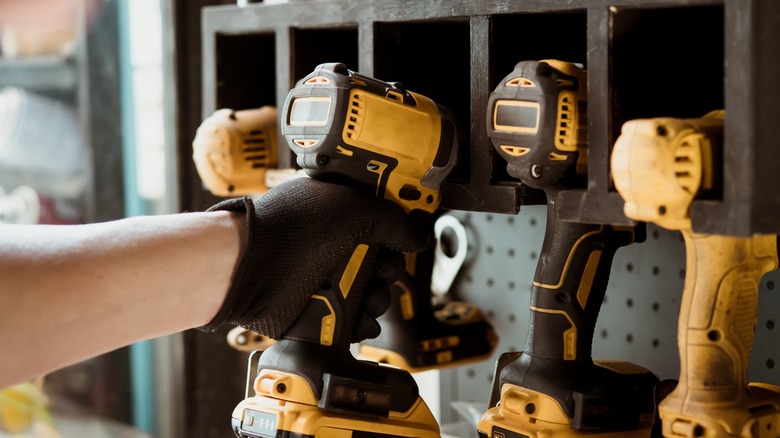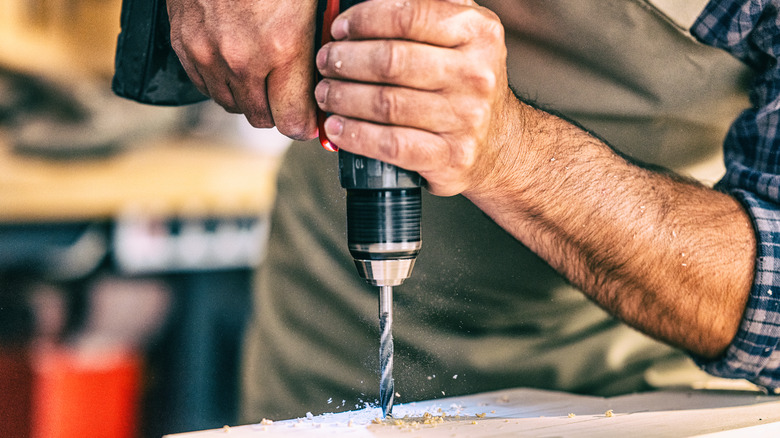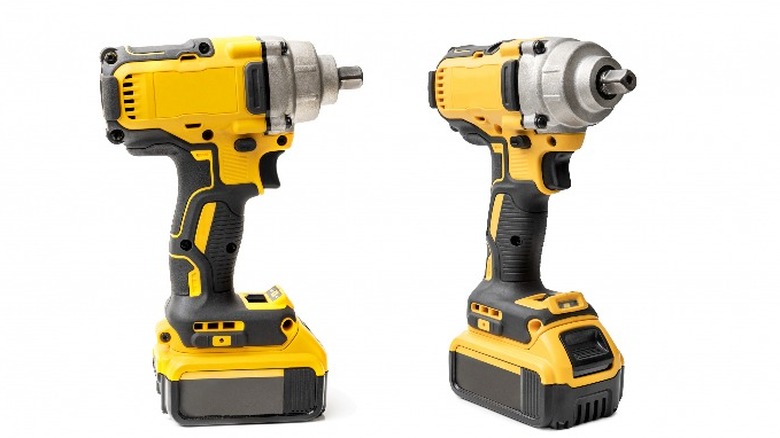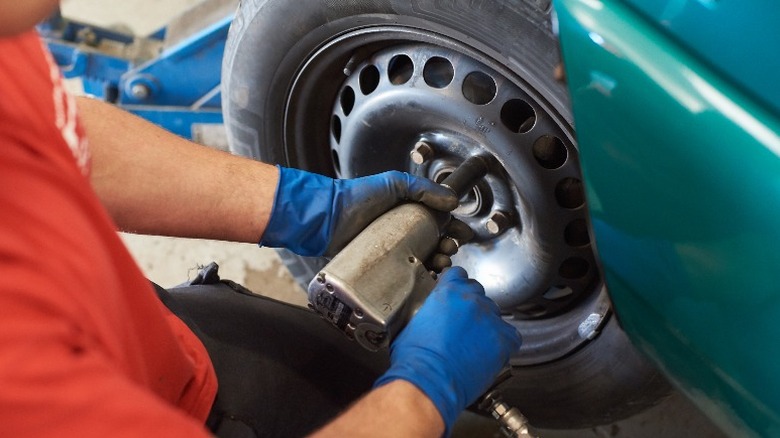Drill Vs Impact Driver: What's The Difference?
When it comes to tools, most people are familiar with the basics: screwdrivers, hammers, pliers, etc. But there's a lot of variation in the world of tools. From multi-use hand tools to electric and battery-powered tools, all the way to highly-specialized niche industry instruments, it's easy to become overwhelmed by tools and their numerous applications. For many do-it-yourselfers and home-repair enthusiasts, choosing the right tool for the job can be a confusing process. It can be even more baffling if you're trying to decide between very similar devices, like a drill and an impact driver.
To the inexperienced or untrained eye, drills and impact drivers may look nearly identical. It's true that you can use these tools interchangeably for many projects, but in reality, drills and impact drivers serve unique purposes and are designed for distinct applications. Though both instruments can be used to create holes or install fasteners, the ways they achieve these feats and the force they can apply are extremely different.
What is a drill?
A drill is a tool designed to create holes and remove or install fasteners like bolts and screws. They typically feature various attachments, like paint stirrers and sanders, which increase the device's applications and versatility. Most drills have variable speed settings, allowing the user to customize speed based on the job and the level of precision needed. Finally, they feature a forward/reverse button that lets operators quickly switch between installing and removing fasteners and helps extract the bit after drilling a hole.
The first drills were hand-powered devices, like an awl, used to bore holes into solid material. But today, most drills are powered by electricity or rechargeable batteries and use an internal motor to generate rotational force. A chuck holds drill bits or attachments in place, making switching between these objects quick and simple.
Drills are one of the most basic power tools and are an essential item for any DIY toolbox. Drills are most commonly used to create holes and install or remove screws. However, they have many applications, and depending on the type of drill and attachments, they can be used for anything from sanding wood to polishing the paint on a car.
What is an impact driver?
Impact drivers and drills have similar applications. They even function similarly due to their use of rotational force. However, impact drivers are much more powerful than drills because they use impact in addition to rotational energy. Impact drivers tend to be heavier and less mobile than drills — though there are exceptions — but include many of the same features, like a forward/reverse button and the ability to add various attachments.
Impact drivers are typically electric, battery, or air-powered. Like drills, they utilize an internal motor to create rotational force but also feature a hammer and anvil system to generate impact. As an impact driver's motor spins, a spring compresses and releases. The spring's force drives a hammer forward until it strikes an anvil. This action repeats continuously as the motor spins, resulting in a powerful force to remove large nuts and bolts or bore holes into extremely tough surfaces.
While drills are ideal for quick and light work, like creating holes in a wood beam or screwing two pieces of lightweight material together, impact drivers are useful for heavy-duty projects like construction and automotive repair.
Which should you buy?
Whether you should buy a drill or impact driver depends on the type of work you plan to do. Drills can handle a large majority of basic home improvement and DIY projects. They're ideal for drilling holes or installing screws in wood, plastic, drywall, glass, and even lightweight metal. You can purchase various drill bits to make boring holes into different surfaces easier and find attachments that allow you to convert your drill into a sander, polisher, paint stirrer, and more.
Impact drivers, on the other hand, are more suited to heavy-duty projects. If you're a professional contractor, construction worker, or automotive mechanic, you'll likely require a wide range of tools, including a drill and an impact driver. Impact drivers are commonly used to remove and install car lug nuts, bore holes into hard surfaces like treated wood, concrete, and metal, and install large fasteners.
If you plan to purchase only one of these tools, an impact driver will provide more versatility, while drills tend to be lighter-weight and more mobile.



